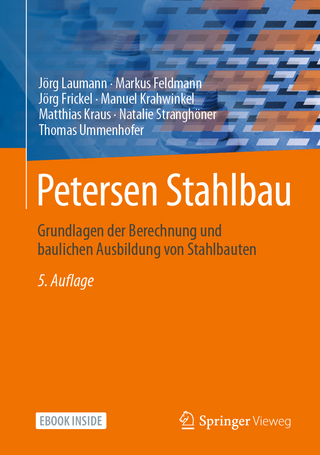
Asphalt Concrete Cores for Embankment Dams / Noyaux de Béton Bitumineux Pour les Barrages en Remblai
CRC Press (Verlag)
978-1-032-87149-3 (ISBN)
- Noch nicht erschienen (ca. Januar 2025)
- Versandkostenfrei innerhalb Deutschlands
- Auch auf Rechnung
- Verfügbarkeit in der Filiale vor Ort prüfen
- Artikel merken
As of today, nearly 200 asphalt concrete core embankment dams (ACED) have been built worldwide with excellent field performance or are under construction in different countries around the world. Among them, the 170 m high Quxue Dam in China is the highest; however even higher ACEDs are under design. There are now more than 50 years of successful experience for this dam type. The gain of popularity, particularly he last fifteen years, in the water retaining, hydropower and mining industries, follows the excellent recorded field performance and behavior for this type of dam, and also comprehensive researches in the technology and development of asphalt concrete core machinery. This bulletin covers the state-of-the-art of current practice after the important development in design and construction during the last 25 years. It addresses all aspects of the design, construction, performance and operation. Characteristics of asphalt concrete cores, requirements for the mix design, laboratory testing and quality control are discussed. Technical specifications are also presented and proposed. Finally, several typical case histories with characteristics and performance are given in Appendices.
Il y a environ 5 000 ans, un petit barrage a été construit dans la vallée du fleuve Indus, en utilisant de l’asphalte comme mortier entre les pierres. Il s’agissait d’une des premières utilisations de l’asphalte en tant que matériau imperméable. Toutefois, le premier barrage « moderne » à noyau de béton bitumineux, placé et compacté mécaniquement, a été construit en Allemagne en 1962. Cette méthode s’est d’abord étendue en Europe, particulièrement en Allemagne et en Autriche. Depuis les quinze dernières années, ce type de barrage gagne en popularité. Des recherches exhaustives ont été effectuées dans la technologie et le développement de machinerie pour les noyaux de béton bitumineux. Le Comité a décidé de mettre à jour le Bulletin qui avait été publié en 1992. Cette tâche ambitieuse a été entreprise par des spécialistes tirés des représentants des comités nationaux d’Autriche, d’Allemagne, de Norvège, de Chine et du Canada.
Aujourd’hui, près de 200 barrages en remblai à noyau de béton bitumineux (BRNBB) ont été construits ou sont en cours de construction dans différents pays à l’échelle mondiale. Parmi eux, le barrage Quxue en Chine, d’une hauteur de 174 mètres, est le plus haut; toutefois, la conception de BRNBB encore plus hauts est en cours. On cumule actuellement plus de 50 années d’expérience réussie pour ce type de barrage. Leur gain de popularité, particulièrement au cours des quinze dernières années, dans les secteurs de la rétention d’eau, de l’énergie hydroélectrique et de l’exploitation minière, correspond à l’excellence de la performance et du comportement consignés sur le terrain pour ce type de barrage, ainsi qu’aux recherches exhaustives dans la technologie et le développement de machinerie pour les noyaux de béton bitumineux. Ce Bulletin présente l’état actuel des dernières pratiques suite aux développements importants en conception et en construction accomplis au cours des 25 dernières années. Il renferme tous les aspects de la conception, de la construction, du comportement et de l’exploitation. Les caractéristiques des noyaux de béton bitumineux, les exigences pour la conception des mélanges, les essais en laboratoire et le contrôle de la qualité sont analysés. Le devis descriptif est également présenté et proposé. Pour terminer, plusieurs cas-types, accompagnés des caractéristiques et du comportement, sont relatés en annexe.
The Commission Internationale des Grands Barrages (CIGB) / International Commission on Large Dams (ICOLD) is a non-governmental International Organization which provides a forum for the exchange of knowledge and experience in dam engineering. The Organization leads the profession in ensuring that dams are built safely, efficiently, economically, and without detrimental effects on the environment. Its original aim was to encourage advances in the planning, design, construction, operation, and maintenance of large dams and their associated civil works, by collecting and disseminating relevant information and by studying related technical questions. Since the late sixties, focus was put on subjects of current concern such as dam safety, monitoring of performance, reanalysis of older dams and spillways, effects of ageing and environmental impact. More recently, new subjects include cost studies at the planning and construction stages, harnessing international rivers, information for the public at large, and financing.
1. FOREWORD
2. INTRODUCTION
3. CHARACTERISTICS OF ASPHALT CONCRETE CORES
4. DESIGN PRINCIPLES AND REQUIREMENTS
5. CONSTRUCTION METHODS AND GUIDELINES
6. TECHNICAL SPECIFICATIONS FOR CONSTRUCTION OF AC CORES
APPENDICES
REFERENCES
1. PRÉFACE
2. INTRODUCTION
3. CARACTÉRISTIQUES DES NOYAUX DE BÉTON BITUMINEUX
4. PRINCIPES ET EXIGENCES DE CONCEPTION
5. MÉTHODES DE CONSTRUCTION ET LIGNES DIRECTRICES
6. DEVIS TECHNIQUE POUR LA CONSTRUCTION DE NOYAU EN BÉTON BITUMINEUX
7. CONTRÔLE DE LA QUALITÉ PENDANT LA CONSTRUCTION
8. CONTRÔLE DES BARRAGES EN OPÉRATION
ANNEXES
RÉFÉRENCES
| Erscheint lt. Verlag | 22.1.2025 |
|---|---|
| Reihe/Serie | ICOLD Bulletins Series |
| Verlagsort | London |
| Sprache | englisch |
| Maße | 156 x 234 mm |
| Themenwelt | Technik ► Bauwesen |
| Technik ► Umwelttechnik / Biotechnologie | |
| ISBN-10 | 1-032-87149-0 / 1032871490 |
| ISBN-13 | 978-1-032-87149-3 / 9781032871493 |
| Zustand | Neuware |
| Informationen gemäß Produktsicherheitsverordnung (GPSR) | |
| Haben Sie eine Frage zum Produkt? |
aus dem Bereich


